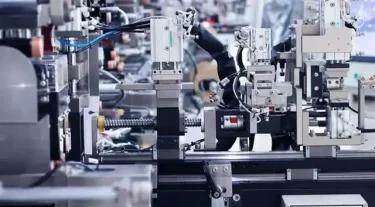
# Tape Production: Processes and Techniques
## Introduction to Tape Manufacturing
Tape manufacturing is a complex process that involves various techniques to produce adhesive tapes for different applications. From packaging to electrical insulation, tapes serve numerous purposes in our daily lives. Understanding the production processes helps in appreciating the technology behind these versatile products.
## Raw Materials Used in Tape Production
The primary materials used in tape manufacturing include:
– Backing materials (plastic films, paper, cloth, or foil)
– Adhesives (rubber-based, acrylic, or silicone)
– Release liners (for pressure-sensitive tapes)
– Additives (tackifiers, stabilizers, and fillers)
## The Tape Manufacturing Process
### 1. Backing Material Preparation
The first step involves preparing the backing material. This may include:
– Extruding plastic films
– Weaving or knitting fabric backings
– Coating paper or foil substrates
### 2. Adhesive Application
There are several methods for applying adhesives:
– Solution coating: Adhesive dissolved in solvent and applied
– Hot melt coating: Molten adhesive applied directly
– Water-based coating: Adhesive dispersed in water
– 100% solids coating: No carrier medium used
### 3. Drying and Curing
After application, the adhesive must be dried or cured:
– Solvent-based adhesives require evaporation
– Water-based adhesives need drying ovens
– Hot melts cool and solidify naturally
– Some adhesives require UV or thermal curing
### 4. Lamination and Slitting
The final steps include:
– Applying release liners (if needed)
– Laminating multiple layers
– Precision slitting to desired widths
– Winding onto cores for final packaging
## Quality Control in Tape Production
Manufacturers implement rigorous quality checks:
– Adhesion testing (peel, tack, and shear)
– Thickness and weight measurements
– Tensile strength evaluation
– Visual inspection for defects
– Environmental resistance testing
## Specialized Tape Manufacturing Techniques
### Double-Sided Tapes
Produced by:
– Coating both sides of a carrier material
– Using transfer coating methods
– Applying different adhesives on each side
### Foam Tapes
Manufactured by:
– Coating adhesive onto foam substrates
– Using pressure-sensitive adhesives
– Creating specific density and thickness
### Electrical Tapes
Require special considerations:
– Dielectric properties
– Flame resistance
– Temperature stability
– Conductive or insulating properties
## Environmental Considerations
Modern tape manufacturing focuses on:
– Reducing solvent use
– Developing biodegradable materials
– Improving energy efficiency
– Implementing recycling programs
– Using water-based adhesives
## Future Trends in Tape Production
Emerging technologies include:
– Nanotechnology-enhanced adhesives
– Smart tapes with sensing capabilities
– Bio-based raw materials
– Improved recycling processes
– Automated manufacturing systems
## Conclusion
Tape manufacturing combines material science, chemical engineering, and precision processing to create products that meet diverse needs. As technology advances, tape production continues to evolve, offering more specialized and environmentally friendly solutions for various industries.
Keyword: tape manufacturing